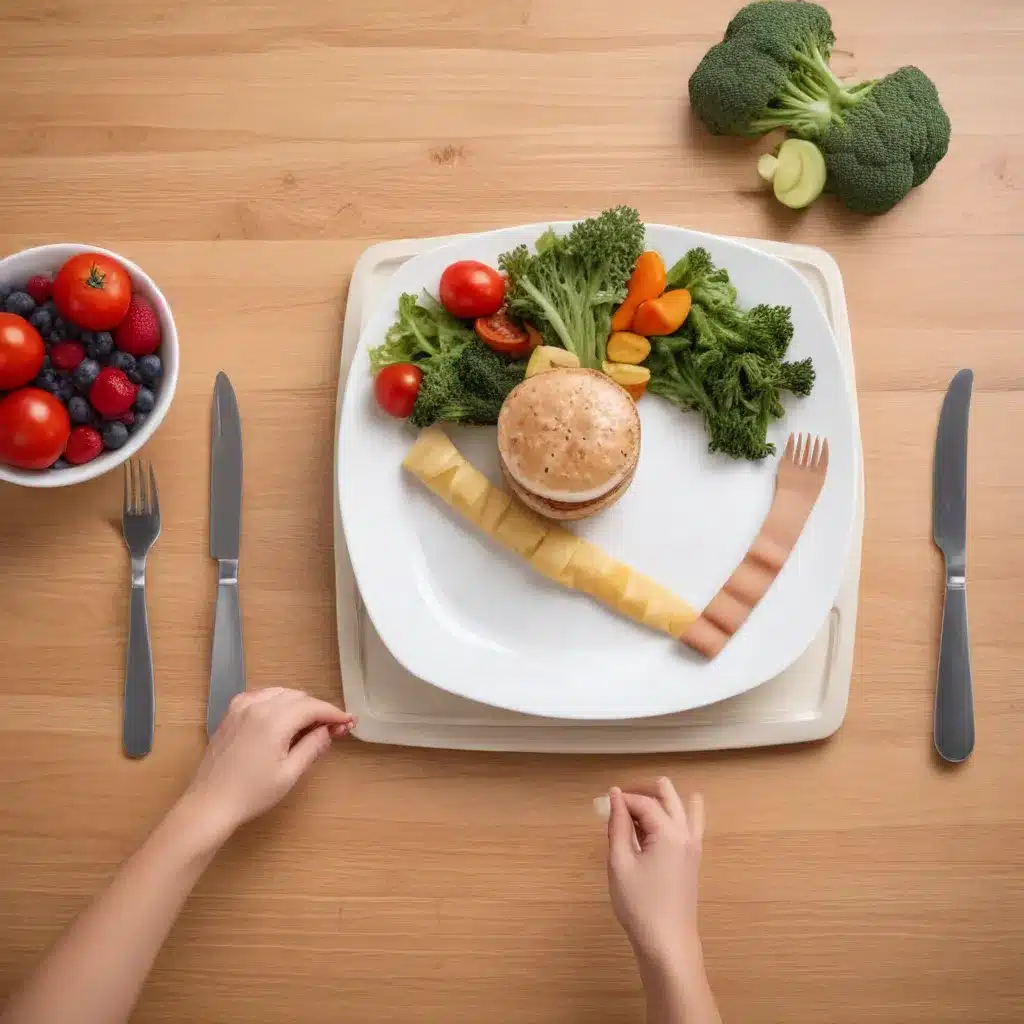
Understanding the Importance of Portion Control
In a world where larger portions have become the norm, portion control is a crucial strategy for maintaining a healthy weight and preventing chronic health issues. Overeating, often fueled by the availability of supersized servings, can lead to unwanted weight gain, obesity, and a host of associated problems, such as type 2 diabetes, heart disease, and certain cancers.
Portion control is not about depriving yourself or following a restrictive diet. It’s about learning to recognize and consume the right amount of food to meet your body’s needs without going overboard. By mastering portion control, you can enjoy a varied and satisfying diet while supporting your overall well-being.
The Role of Portion Control in a Balanced Diet
A balanced diet is the foundation of good health, and portion control is a key component of achieving this balance. When you consume the right amount of food from each food group, you ensure that your body receives the optimal mix of nutrients, such as carbohydrates, proteins, fats, vitamins, and minerals.
Overeating, even of healthy foods, can lead to an imbalance in nutrient intake and contribute to weight gain. Portion control helps you maintain the appropriate servings of different food groups, ensuring that you get the right amount of each essential nutrient without overdoing it.
For example, a serving of pasta should be about the size of your fist, while a serving of protein, such as lean meat or fish, should be the size of your palm. Vegetables and salads, on the other hand, can be enjoyed in larger portions, as they are generally low in calories but high in fiber and other beneficial nutrients.
By understanding and applying portion control principles, you can create a well-balanced diet that supports your overall health and helps you maintain a healthy weight.
Strategies for Practicing Portion Control
Adopting portion control strategies can be a game-changer in your journey towards a healthier lifestyle. Here are some practical tips to help you get started:
Use Smaller Plates and Bowls
Serve your meals on smaller plates and bowls, as this can create the illusion of a larger portion, tricking your brain into feeling satisfied with less food. Research has shown that people tend to consume less when using smaller tableware.
Measure and Weigh Your Food
Get familiar with standard serving sizes by using measuring cups, spoons, and a food scale. This will help you become more aware of how much you’re actually eating, which can be especially useful for calorie-dense foods like nuts, oils, and nut butters.
Practice Mindful Eating
Slow down and savor each bite, paying attention to the flavors, textures, and aromas of your food. Mindful eating can help you recognize when you’re feeling full, preventing you from overeating.
Plan and Prep Meals in Advance
Set aside time to plan and prepare your meals. This allows you to control portion sizes and ensure that you’re consuming a balanced diet. Meal prepping can also make it easier to stick to your portion control goals.
Read Food Labels Carefully
Understanding serving sizes and nutritional information on food labels can help you make informed choices about the amounts you consume. Pay attention to the number of servings per package and adjust your portions accordingly.
Opt for Preportioned Foods
Consider incorporating preportioned foods, such as single-serve snacks or frozen meals, into your diet. These can help you maintain portion control without the temptation to overindulge.
Stay Hydrated
Drinking a glass of water before a meal can help you feel fuller, reducing the likelihood of overeating. Staying hydrated throughout the day can also support your overall health.
Portion Control and Weight Management
Portion control is a powerful tool in the fight against obesity and maintaining a healthy weight. By consistently monitoring and controlling the amounts of food you consume, you can create a calorie deficit, leading to sustainable weight loss and improved metabolic health.
Research has shown that people who practice portion control are more successful in losing weight and keeping it off in the long term. Portion control not only helps you manage your calorie intake but also promotes a balanced diet, ensuring that you’re getting the necessary nutrients your body needs.
Moreover, portion control can be especially beneficial for individuals with chronic conditions, such as type 2 diabetes, hypertension, and heart disease. By controlling portion sizes, you can better manage your blood sugar levels, blood pressure, and cholesterol, reducing the risk of further complications.
Incorporating Portion Control into Your Lifestyle
Developing portion control habits takes time and practice, but the benefits are well worth the effort. Start by making small, sustainable changes, such as using smaller plates or being mindful of your serving sizes. Over time, these habits will become second nature, and you’ll be on your way to a healthier, more balanced lifestyle.
Remember, portion control is not about depriving yourself or completely eliminating your favorite foods. It’s about finding a healthy balance and learning to enjoy all foods in moderation. By incorporating portion control strategies into your daily routine, you can maintain a healthy weight, prevent chronic diseases, and promote overall well-being.
For more information and resources on portion control, visit the Stanley Park High School website. Together, we can empower our community to make informed, portion-conscious decisions that support a healthy, balanced lifestyle.

